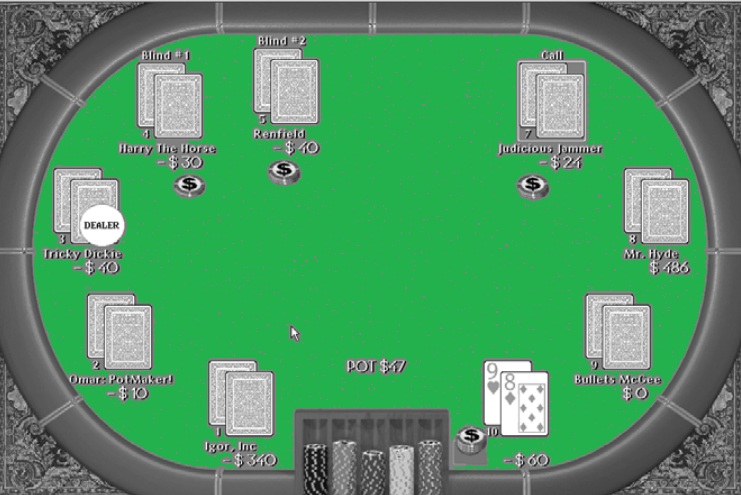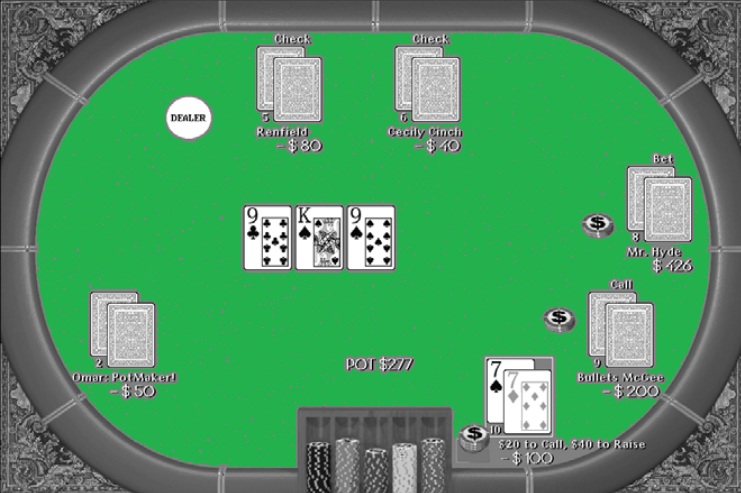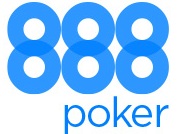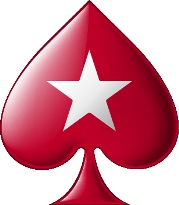Your goal in Hold’em poker is to make the best five-card hand you can from the two cards you’re dealt individually and the five common cards dealt in the middle of the table. You can use both, one, or none of your hole cards in building the hand. Hold ’em tables typically seat 10 players.
Note We’ll show you how to create the best possible hand from your hole cards and the common cards for each game mentioned in this section. Identifying the best possible hand, which poker players call the nuts or a lock, from a set of common cards is a critical skill. When you have the nuts, you can bet without fear; if you don’t have the nuts, you need to be careful when throwing your money around.
A Hold ’em hand starts with one player being given the Dealer button, which is an indicator signifying the player who gets to act last in a betting round. (We explain in Chapter 8 why acting last in a Hold ’em hand is such an advantage.) If you’re starting up a new game, the house deals a card to each player; the player receiving the highest card gets the Dealer button. If you’re in an ongoing game, the button moves around the table clockwise, so the player one seat to the left of the button will have the button during the next hand.
Poker would be a boring game if there were no way to compel players to put money into the pot, so remember the first two players to the left of the button are forced to make a bet before they look at their cards. These bets are usually one-half of a small bet for the player to the left of the button and a full small bet for the player two seats to the left of the button. At $2–$4, the small blind is $1 and the big blind is $2. Online poker rooms don’t let players enter a game for free, so you can either sit out until it’s your turn to pay the big blind or post a big blind out of position and start playing immediately. If you’re new to the game, or if you don’t recognize most of the players at your table, we recommend watching a few hands to start to get a read on how your opponents play.
It’s also common for a player who is taking up a seat in the game to sit out their blind hands so they can answer the phone, get something to eat, or take a bathroom break. To get back into the game, that player will need to make up the blinds by waiting for the big blind to come around or by posting both a small and big blinds ($3 in a $2–$4 game where the blinds are $1 and $2) on one hand. The big blind is considered a live bet, meaning that it is an automatic call, but the small blind is a dead bet and doesn’t count as a raise.
When all of the blinds are posted, the house deals each player two cards. The results of the deal are shown in the Figure below:

The two players to the left of the button already have money in the pot, so the player to the left of the big blind has to decide whether to fold, call the big blind, or raise. Action continues around the table until it reaches the small blind, who can fold and forfeit the money already in the pot, call, or raise. The big blind can then check (if there has been no raise), call any raises, or raise. Action continues around the table until everyone has either called all bets or folded.
When the first betting round is over, the dealer turns over the three-card flop:

Note Some sites have an Automatically Fold Losers button that lets you throw away your cards without exposing them when another player shows a hand that beats yours.










